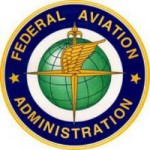In its continuing effort to safely expand and support commercial unmanned aircraft operations in U.S. airspace, the Federal Aviation Administration has now granted more than 1,000 Section 333 exemption approvals. As of today, the agency has issued 1,008 such exemptions.
Companies and individuals from a broad spectrum of industries are taking advantage of the Section 333 exemption process. Many of the grants the FAA has issued allow aerial filming for uses such as motion picture production, precision agriculture and real estate photography. The agency also has issued grants for new and novel approaches to inspecting power distribution towers and wiring, railroad infrastructure and bridges.
Section 333 of the FAA Modernization and Reform Act of 2012 gives the Secretary of Transportation authority to determine if an airworthiness certificate is required for a UAS to operate safely in the national airspace system.
To address the demand for Section 333 authorizations, the FAA recently streamlined the process to make it easier for operators to access the nation’s airspace.
In March, the agency began issuing “blanket” Certificates of Waiver or Authorization (COAs) to Section 333 exemption holders. This COA allows flights anywhere in the country at or below 200 feet except in restricted airspace, close to airports, and other areas, such as major cities where the FAA prohibits UAS operations. Previously, an operator had to apply for and receive a COA for a particular block of airspace, a process that can take as long as 60 days.
To expedite the processing of Section 333 petitions, in April the FAA began to issue summary grants for operations similar to those that it has already approved. Summary grants are more efficient because approval is based on analysis from a previously granted exemption.
For the list of Section 333 exemption grants, see: http://www.faa.gov/uas/
For more information on the FAA and UAS, go to http://www.faa.gov/uas/
Source: Press Release

